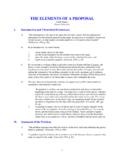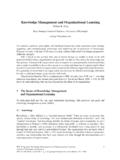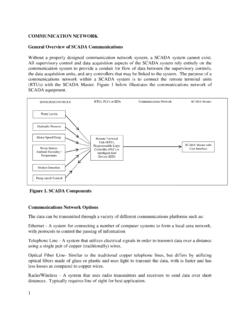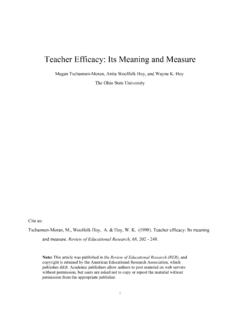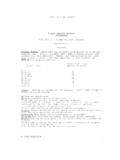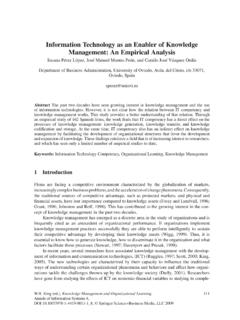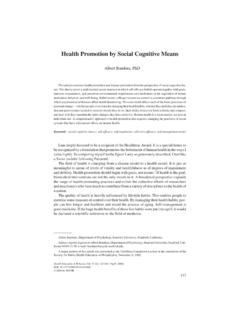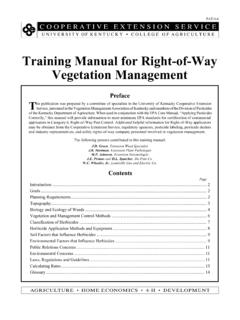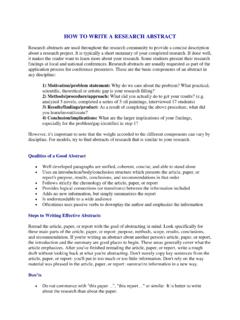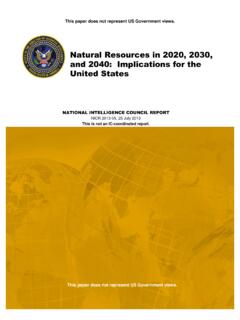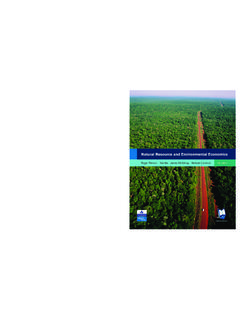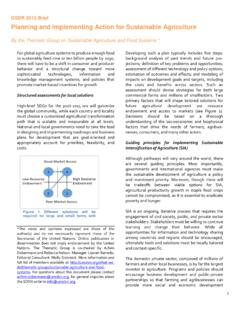Transcription of SOCIAL COGNI TIVE THEORY
1 1 SOCIAL COGNITIVE THEORY Albert Bandura Stanford UniversityBandura, A. (1989). SOCIAL cognitive THEORY . In R. Vasta (Ed.), Annals of child development. Six theories of child development (pp. 1-60). Greenwich, CT: JAI theories have been proposed over the years to explain the developmental changesthat people undergo over the course of their lives. These theories differ in the conceptions ofhuman nature they adopt and in what they regard to be the basic causes and mechanisms ofhuman motivation and behavior. The present chapter analyzes human development from theperspective of SOCIAL cognitive THEORY (Bandura, 1986).
2 Since development is a life- long process(Baltes & Reese, 1984), the analysis is concerned with changes in the psychosocial functioningof adults as well as with those occurring in childhood. Development is not a monolithic capabilities vary in their psychobiologic origins and in the experiential conditionsneeded to enhance and sustain them. Human development, therefore, encompasses manydifferent types and patterns of changes. Diversity in SOCIAL practices produces substantialindividual differences in the capabilities that are cultivated and those that Reciprocal DeterminismBefore analyzing the development of different human capabilities, the model of causationon which SOCIAL cognitive THEORY is founded is reviewed briefly.
3 Human behavior has often beenexplained in terms of one-sided determinism. In such modes of unidirectional causation,behavior is depicted as being shaped and controlled either by environmental influences or byinternal dispositions. SOCIAL cognitive THEORY favors a model of causation involving triadicreciprocal determinism. In this model of reciprocal causation, behavior, cognition and otherpersonal factors, and environmental influences all operate as interacting determinants thatinfluence each other bidirectionally (Figure 1). Reciprocal causation does not mean that thedifferent sources of influence are of equal strength.
4 Some may be stronger than others. Nor do3the reciprocal influences all occur simultaneously. It takes time for a causal factor to exert itsinfluence and activate reciprocal Insert Figure 1 about here -----------------------------------Let us consider briefly the major interactional links between the different subsystems ofinfluence. The P B of reciprocal causation reflects the interaction between thought, affect andaction. Expectations, beliefs, self- perceptions, goals and intentions give shape and direction tobehavior. What people think, believe, and feel, affects how they behave (Bandura, 1986; Bower,1975; Neisser, 1976).
5 The natural and extrinsic effects of their actions, in turn, partly determinetheir thought patterns and emotional reactions. The personal factor also encompasses thebiological properties of the organism. Physical structure and sensory and neural systems affectbehavior and impose constraints on capabilities. Sensory systems and brain structures are, inturn, modifiable by behavioral experiences (Greenough, Black, & Wallace, 1987).The E P segment of reciprocal causation is concerned with the interactive relationbetween personal characteristics and environmental influences.
6 Human expectations, beliefs,emotional bents and cognitive competencies are developed and modified by SOCIAL influencesthat convey information and activate emotional reactions through modeling, instruction andsocial persuasion (Bandura, 1986). People also evoke different reactions from their socialenvironment by their physical characteristics, such as their age, size, race, sex, and physicalattractiveness, quite apart from what they say and do (Lerner, 1982). People similarly activatedifferent SOCIAL reactions depending on their socially conferred roles and status.
7 For example,children who have a reputation as tough aggressors will elicit different reactions from their peers4than those reputed to be unassertive. Thus, by their SOCIAL status and observable characteristicspeople can affect their SOCIAL environment before they say or do anything. The SOCIAL reactions soelicited affect the recipients' conceptions of themselves and others in ways that either strengthenor alter the environmental bias (Snyder, 1981).The B E segment of reciprocal causation in the triadic system represents the two-wayinfluence between behavior and the environment.
8 In the transactions of everyday life, behavioralters environmental conditions and is, in turn, altered by the very conditions it creates. Theenvironment is not a fixed entity that inevitably impinges upon individuals. When mobility isconstrained, some aspects of the physical and SOCIAL environment may encroach on individualswhether they like it or not. But most aspects of the environment do not operate as an influenceuntil they are activated by appropriate behavior. Lecturers do not influence students unless theyattend their classes, hot stove tops do not burn unless they are touched, parents usually do notpraise their children unless they do something praiseworthy.
9 The aspect of the potentialenvironment that becomes the actual environment for given individuals thus depends on howthey of the bidirectionality of influence between behavior and environmentalcircumstances, people are both products and producers of their environment. They affect thenature of their experienced environment through selection and creation of situations. People tendto select activities and associates from the vast range of possibilities in terms of their acquiredpreferences and competencies (Bandura & Walters, 1959; Bullock & Merrill, 1980; Emmons &Diener, 1986).
10 Through their actions, people create as well as select environments. Aggressivepersons produce hostile environments wherever they go, whereas those who act in a morefriendly manner generate an amiable SOCIAL milieu (Raush, 1965). Thus, behavior determines5which of the many potential environmental influences will come into play and what forms theywill take. environmental influences, in turn, partly determine which forms of behavior aredeveloped and activated. The growing recognition of reciprocal causation has altered the way inwhich socialization is viewed.

